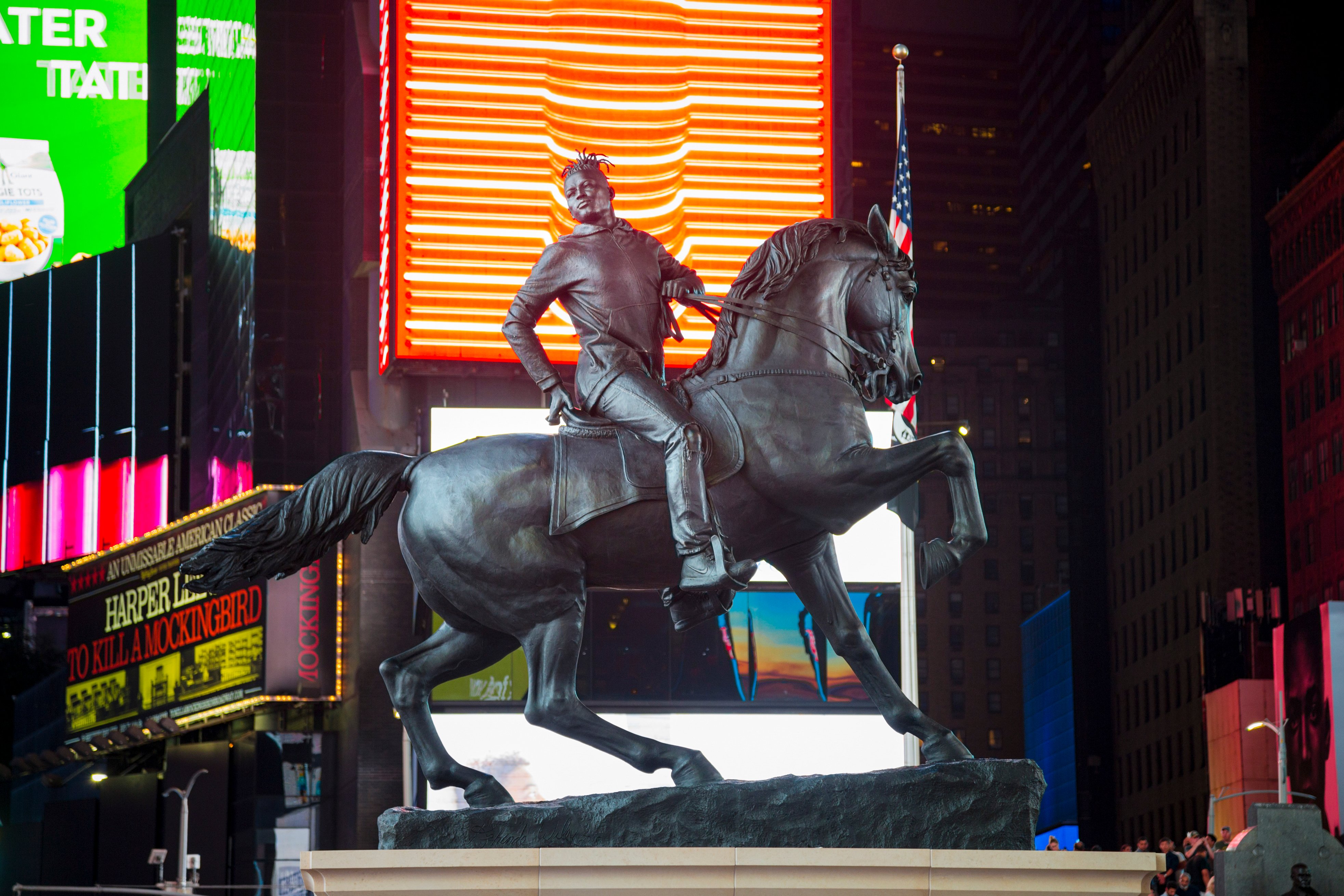
When Kehinde Wiley visited Richmond’s Virginia Museum of Fine Arts for his retrospective there in the summer of 2016, he was struck by a monument a few blocks away that depicted Confederate general James Ewell Brown Stuart poised atop a horse, torso cocked back, a steely look in his eye.
The statue, just one of many Confederate monuments immortalized in bronze on Richmond’s Monument Avenue, stuck with Wiley. In the meantime, public discourse around the fate of such statuary grew fiery as the country reckoned with hard questions about its past. Do we remove or destroy these monuments in an effort to rewrite history? Or do we live with them as a reminder of past mistakes?
That question was the inspiration for Wiley’s newest work, an eight-ton, 29-foot-high-tall bronze equestrian monument titled Rumors of War. The statue, Wiley’s largest work to date and his first public sculpture, was unveiled last Friday in Time Square—a site classified by the artist as the “crossroads of human movement on a global scale.” The work is funded by Times Square Arts, the Virginia Museum of Fine Arts, and Wiley’s gallery, Sean Kelly.
At first glance, it looks a lot like Stuart’s statue. A figure rears atop a horse, chest out, looking slightly backward. But saddled atop the horse is not a Confederate general in a war uniform, but a young black man wearing Nikes and a hoodie.
Kehinde Wiley, Rumors of War (2019). Courtesy of the Virginia Museum of Fine Arts, Times Square Arts, and Sean Kelly. Photo: Ka Man Tse for Times Square Arts.
“Art and violence have for an eternity held a strong narrative grip with each other,” Wiley said in a statement. “Rumors of War attempts to use the language of equestrian portraiture to both embrace and subsume the fetishization of state violence.”
This isn’t unfamiliar territory for the 42-year-old artist, who has made a career of adapting the language of classical portraiture to accommodate depictions of proud black men and women. Wiley has appropriated equestrian portraiture before too, such as in his paintings Napoleon Leading the Army over the Alps and Equestrian Portrait of Prince Tommaso of Savoy-Carignan.
But working in a different medium, on a very different scale, was a new challenge. Most of his paintings, including his presidential portrait of Barack Obama, position his subjects in front of ornate wallpaper—backdrops dense with symbolism. Working in sculpture offered a new contextual opportunity for the artist.
“What I do in my own work here with regards to sculpture is to allow the city to be the backdrop, to allow a moving and constantly changing America to be the context in which we see this young man riding a massive horse,” he told the Associated Press this week.
Kehinde Wiley at the opening ceremony for Rumors of War (2019). Photo: Ian Douglas for Times Square Arts.
That context will change dramatically in December when Wiley’s monument is moved from Times Square to the grounds of the Virginia Museum of Fine Arts, where it will live in perpetuity, just down the road from the Confederate statues that inspired it.
“I believe that when dealing with a troubled past and arguably a beautiful future, artists should use every tool in their wheelhouse,” the artist said. “What I try to do is say yes to certain aspects of history. And I say no to others.”
“What we’re saying yes to here,” he continues, “is monumentality, Romanticism, the love of sculpture, the love affair with the body. This is something that I think is beautiful, but I don’t want to necessarily use the negative aspects of America’s history as a means through which you view this work. I think promise is the leading edge of this work.”